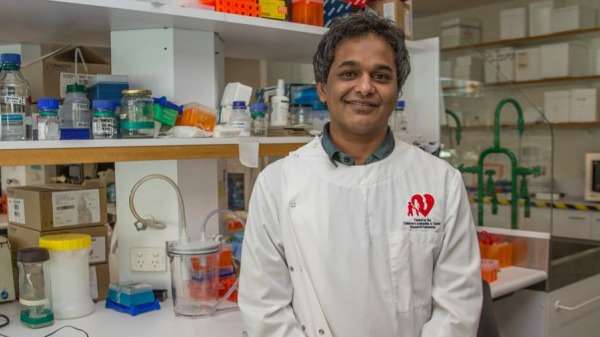Telethon Kids Institute senior research fellow Dr Mark Cruickshank says the new drug combination could help improve survival rates for babies with leukaemia. Credit: Telethon Kids Institute
Telethon Kids Institute (TKI) researchers have discovered a new drug combination to help babies battle a rare, aggressive type of leukaemia with grim cure rates.
The medical breakthrough has been about 20 years in the making, says TKI senior research fellow Dr Mark Cruickshank.
Dr Cruickshank and other researchers used donated cells from babies diagnosed with acute lymphoblastic leukaemia to create laboratory models (cell lines) replicating the disease.
"It's the first time a cell line panel from this high-risk patient group has ever been made," Dr Cruickshank says.
Using next generation sequencing technology, researchers compared the genetic makeup of the laboratory models to the patients' cancer cells. This was the first time such a detailed comparison was made between cell lines and patients cells. Researchers established that these models accurately mimic-ed the diverse and aggressive features of cancer from very young patients.
The researchers then tested 100 drugs currently used in adult cancer treatments on the models.
They found one drug, Romidepsin, enhanced the effect of another important drug commonly used to treat childhood leukaemias, Cytarabine.
"We can see in adding the Romidepsin with the Cytarabine, it significantly reduces the leukaemia detected by 25 per cent...compared to either drug on its own," Dr Cruickshank says.
"What we think this means is in patients where the drug isn't working, we will be able to induce a response and in those that are responding, we could lower their dose."
He says a treatment that was more powerful but less toxic to babies' small bodies was an exciting possibility.
While children over 12 months old with a common type of leukaemia have about a 90 per cent survival rate, only about 30 per cent of babies diagnosed with acute lymphoblastic leukaemia before the age of three months survive.
This is partly because their bodies can't tolerate high doses of toxic chemotherapy drugs, while those who do beat the odds can have significant side effects.
The researchers are now fine-tuning the drug combination's timing and dose before it is hopefully used in clinical trials.
Dr Cruickshank says they are taking it one step at a time, but the discovery is "the tip of the iceberg".
"We have found a drug that offers hope to help these babies," he says.
"Potentially what we have found could apply to other high-risk leukaemia in children.
"Just as importantly, we have generated a resource that really paves the way for studying the issue of personalised cancer treatment in greater detail."
Their findings were published in international journal Leukemia in July.
Journal information: Leukemia
Provided by Science Network WA
This article first appeared on ScienceNetwork Western Australia a science news website based at Scitech.






















